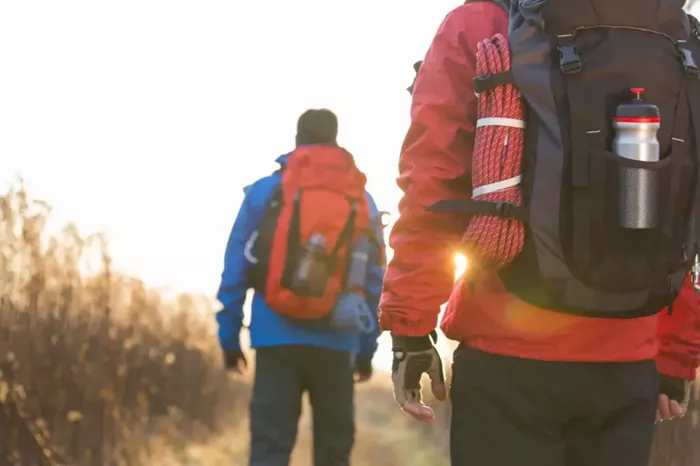Walking in 60-degree weather can be one of the most enjoyable outdoor experiences. The air is crisp but not freezing, the sun is warm but not scorching, and nature often shines in its full glory during this mild temperature range. However, dressing appropriately for a walk or hike in these conditions is crucial to staying comfortable, safe, and energized. The key lies in understanding how to layer clothing, choose the right materials, and adapt to variables like wind, humidity, or sunlight. This guide will break down everything you need to know about what to wear when walking in 60-degree weather, using simple, actionable advice.
Understanding 60-Degree Weather
Sixty degrees Fahrenheit (15.5°C) is a transitional temperature. It’s not cold enough for heavy winter gear, but it’s also not warm enough for shorts and a tank top. This range often occurs during spring mornings, fall afternoons, or in regions with mild climates. However, factors like wind, rain, or direct sunlight can drastically change how 60 degrees feels. For example, a windy day might make it feel closer to 50°F (10°C), while bright sunshine could make it feel like 70°F (21°C). Your clothing choices must account for these variables to avoid overheating or chilling.
The human body generates heat during physical activity like walking or hiking. This means you might start a walk feeling slightly cool but warm up significantly after 10–15 minutes of movement. Striking the right balance between insulation and breathability is essential.
The Layering System: Your Best Friend
Layering is the most effective strategy for staying comfortable in 60-degree weather. It allows you to add or remove clothing as needed, adapting to changes in temperature, activity level, or weather. A typical layering system includes three components:
Base Layer: Moisture Management
The base layer sits directly against your skin. Its primary job is to wick sweat away from your body to keep you dry. In 60-degree weather, a lightweight or medium-weight base layer made of synthetic materials (like polyester or nylon) or natural fibers (like merino wool) works best. Avoid cotton, as it retains moisture and can leave you feeling damp and cold.
- Example: A short-sleeve or long-sleeve moisture-wicking shirt.
- Tip: If you’re hiking in direct sunlight, opt for lighter colors to reflect
Mid-Layer: Insulation
The mid-layer traps heat to keep you warm. In 60-degree weather, you likely won’t need heavy insulation, but a light fleece, vest, or sweater can provide just enough warmth without causing overheating.
- Example: A zip-up fleece jacket or a down vest.
- Tip: Choose a mid-layer with a zipper so you can vent excess heat easily.
Outer Layer: Weather Protection
The outer layer shields you from wind, rain, or unexpected weather changes. In dry conditions, a windbreaker or lightweight shell is sufficient. If rain is possible, pack a waterproof jacket.
- Example: A breathable, water-resistant jacket with pit zips for ventilation.
- Tip: Ensure your outer layer is compact enough to stash in a backpack if not needed.
Upper Body Clothing Choices
Your upper body generates a lot of heat during walking, so focus on breathability.
Shirts
- Short-Sleeve Shirts: Ideal for sunny days or high-intensity hikes. Pair with a light mid-layer for cooler moments.
- Long-Sleeve Shirts: Better for windy days or shaded trails. Look for options with UPF sun protection.
Sweaters and Jackets
- Fleece: Provides warmth without bulk.
- Softshell Jackets: Offer wind resistance and stretch for mobility.
- Lightweight Down: Packable and warm but may be too hot for strenuous activity.
Pro Tip: Roll up sleeves or tie jackets around your waist if you get too warm.
Lower Body Clothing Choices
Your legs require less insulation than your upper body but still need protection from elements.
Pants
- Convertible Pants: Zip-off legs adapt to temperature changes.
- Lightweight Hiking Pants: Look for water-resistant, quick-drying fabrics.
- Leggings or Tights: Pair with shorts for chilly mornings.
Shorts
Shorts are suitable for sunny, calm days. Choose moisture-wicking fabrics and avoid denim, which can chafe.
Pro Tip: If you wear shorts, pack lightweight leggings in case temperatures drop.
Footwear and Socks
Your feet endure the most stress during a walk or hike, so proper footwear is non-negotiable.
Shoes
- Trail Runners: Lightweight and breathable for well-maintained paths.
- Hiking Boots: Offer ankle support for rocky or uneven terrain.
- Walking Shoes: Cushioned soles reduce impact on paved trails.
Socks
- Material: Merino wool or synthetic blends wick moisture and prevent blisters.
- Thickness: Medium-weight socks balance warmth and breathability.
Pro Tip: Always break in new shoes before a long walk.
Accessories: Small Items, Big Impact
Accessories fine-tune your comfort in 60-degree weather.
Hats
- Sun Hat: Wide-brimmed hats protect against UV rays.
- Beanie: Retain heat on cooler mornings or windy peaks.
Gloves
Lightweight gloves are handy for breezy conditions.
Sunglasses
UV-protective sunglasses reduce glare and eye strain.
Neck Gaiter or Buff
A versatile accessory to cover your neck, face, or ears as needed.
Adjusting for Weather Variables
Wind
Wind can make 60 degrees feel colder. Add a windproof layer and secure loose clothing.
Rain
Waterproof jackets, pants, and shoe covers keep you dry. Avoid cotton entirely in wet conditions.
Sun
Wear UPF-rated clothing, sunglasses, and sunscreen. Hydrate frequently.
Common Mistakes to Avoid
- Overdressing: Start slightly cool; you’ll warm up as you move.
- Ignoring Layering: A single heavy jacket limits adaptability.
- Wearing Cotton: It traps moisture and takes forever to dry.
Conclusion
Walking in 60-degree weather is a delightful experience when you’re dressed right. By mastering the art of layering, choosing moisture-wicking fabrics, and accessorizing wisely, you’ll stay comfortable no matter what the trail throws at you. Remember to check the weather forecast, pack versatile layers, and prioritize breathability over bulk. With these tips, you’re ready to embrace the joys of hiking in perfect 60-degree conditions—where every step feels just right.
Related topics:
What Clothes to Wear for Hiking: A Simple Guide
What Type of Material is Good for Hiking Clothes

